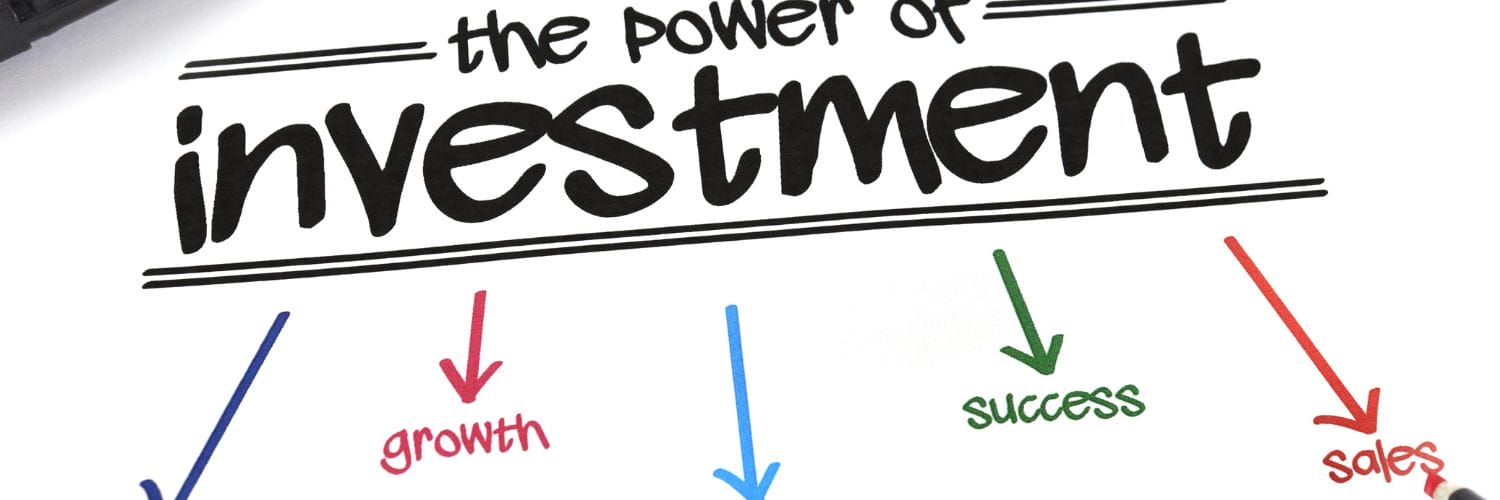Finding good investment ideas can be difficult, regardless of whether you are a seasoned investor or Warren Buffett.
To assist you in finding the next hot stock, a seemingly limitless variety of financial services firms make grand claims. And everyone has that one overly enthusiastic neighbor or cousin constantly pushing the “next big thing.”
Avoid the “Ten best stocks to buy today” headlines. These companies push narratives and try to draw eyeballs with sensational headlines.
Instead, we have a different way to lead to better long-term returns and stability. Remember, we can find investments that work for us but not for others. It all comes down to our investment preferences and goals.
We can’t compare ourselves to Warren Buffett and others; instead, we focus on our returns and what we can control.
In today’s post, we will learn:
- Where Do We Start?
- Deciding What Kind of Investor You Are
- How To Find Investment Ideas
- Investment Ideas for Beginners
- Investor Takeaway
Okay, let’s dive in and learn more about how to find investment ideas.
Where Do We Start?
Before diving in and becoming the next Warren Buffett, we must build our house to withstand any challenges.
Despite our grand plans, life will throw challenges our way. So before putting our hard-earned money into the markets, we have two steps to start us down the path.

The first step: build an emergency fund.
I know, boring.
But bear with me.
Curveballs are common in life, like unanticipated medical costs or job loss. Most personal finance experts suggest creating an emergency fund of about six months’ worth of expenses before investing.
Keeping this account apart from your regular investment portfolio is a good idea. If a crisis arises, having an emergency fund can prevent you from selling investments because you need cash.
Creating your emergency fund can start with a simple savings account. Many online banks offer better rates than the brick and mortar banks, and they offer simple ways to transfer money from your paycheck.
It can start with something as small as $10 a paycheck.
Remember, water dripping on a stone makes an impression.
Try removing as much friction as you can to achieve your goals. A good rule of thumb is to make saving a part of your “bills.” This will help you ensure your savings stay on course.
Experts recommend having anywhere from three to six months of expenses saved up. Dave Ramsey suggests building it to $1,000 to cover emergencies, such as a tire repair. And then build from there.
The second step: buy an index fund.
But, Dave, you are an individual stock guy; what’s with the index fund advice?
Well, glad you asked because there are two reasons for the recommendation.
First, getting started remains one of the biggest challenges for beginners, and any way we can remove the friction and encourage beginners to step off the diving board, I embrace.
Buying an index fund removes the friction and gets beginners started.
Second, the American economy is the strongest growth engine ever. A smart initial step in building any portfolio is exposing yourself to a wide range of businesses in various industries. With index funds, you may save time, ease stress, and secure your portfolio for long-term success.
Exchange-traded funds (ETFs) and mutual funds designed around specific sectors (like technology or healthcare) and even sub-sectors are available to investors who desire exposure to a particular subject (such as cloud computing or biotechnology).
Index funds remain an excellent way for beginners to dip their toes into investing without as much risk and fear of failure.
Deciding What Kind of Investor You Are
Before diving in and learning more about finding investment ideas, you need to decide what kind of investor you are and how hands-on you want to be with picking your investments.

- DIY – are you the type that wants control over their investment choices and wants to do the research? Then choosing individual investments is the way to go. The world is your oyster, and there are scads of different ways to go: stocks, bonds, ETFs, index funds, real estate, and much more. To learn more about pursuing your investments, start here.
- Need professional help – if you are the type that would feel more comfortable having a professional manage your investments and leave it to the pros, there are many options for you, from the personal touch to Robo-advisors. The personal touch ranges from investment brokers like Personal Capital, your bank, or outside firms like Charles Schwab. Some of these will require minimum balances, so keep that in mind.
- 401k – you can easily invest for your future using your employer’s 401k, which is professionally managed and allows you to invest it and forget it; plus, most employers offer matching, which is free money.
Depending on your choice from above will dictate which investment options are the best fit. Keep in mind that you can easily mix and match the above options. For example, you can and should contribute to your 401k, especially if they offer a match, plus you can manage outside investments on your own.
Deciding what kind of investor will help guide what kinds of investments you want to find.
For example, if the idea of reading lots of financial statements and reports leaves you cold, then searching for the next Google doesn’t make sense.
But if that idea excites you, doing the research and turning over as many rocks as possible will work well for you in the long run.
Remember, we have many ways to invest. We need to find what works for us and go with it. We don’t win any prizes for the degree of difficulty in our investment choices.
How to Find Investment Ideas
Finding investment ideas offers many different methods. Here is a list that we will dive into a little deeper.
- Stock screeners
- 52 Week low list
- Business media
- Blogs
- Company annual reports
- Life
- Practice, practice, and more practice

Okay, let’s dive in and explore each of these in detail.
Stock Screeners
The free stock screener Finviz provides a terrific tool for finding investments. There isn’t only one “right” technique for choosing stocks to buy, although we can take the following variables into account:
- Industry
- Market cap
- Revenue growth
- Gross margins
- Price to earnings
- Price to free cash flow
- Enterprise value
- Insider ownership
We can use each of the above metrics to help us screen for a list of potential investments. The list above is not exhaustive; you can add or subtract any useful metrics or values.
Let’s back up a moment and explain how a stock screener works. Any screener starts with the investing universe, which equals 11,000 companies. We can start to thin the herd by utilizing a list of topics.
Many of these topics will depend on what metrics or values are important to you. For example, if you want profitable companies, you can screen for higher margins, such as gross. Or you can screen for undervalued companies using P/E or P/FCF.
These metrics can give you a smaller universe to choose from and narrow your choices.
Most financial websites offer a screener of some sort. Some have better features than others. But the most important ideas remain. Find great companies with great financials at a good price.
Remember, these tools help us find investment options, not actual investments. Even after finding the next Google, we must research before pulling the trigger.
52-Week Low List
We can use the 52-week low list to find undesirable companies in the market. These companies currently trade below their 52-week lows.
52-week lows offer companies beaten down by the market; for whatever reason, Google might trade for a lower price than the last 52 weeks, or calendar year.
The 52-week low list refers to technical trading indicators, but we can use the same list to find out of favor companies.
For example, Google and Microsoft trade at their 52-week lows in today’s market.
Does this mean we should buy them?
No, but it could indicate an opportunity to find a great company at a great price.
As with any research topic, we need to do our due diligence.
A great resource for 52-week lows is Nasdaq.com and finviz.
Business Media
The business media offers many different opportunities to find ideas. For example, the Wall Street Journal covers business news, which provides opportunities for ideas. Or you can watch CNBC and find investment ideas from the companies they discuss.
The only issue with using business media is the “noise” they create. Remember, their main job remains driving eyeballs to their medium. Print, audio, or video need to generate clicks or eyeballs.
Because of that need, they sometimes stir up drama or controversy to drive traffic.
So, we need to remain vigilant when we use business media.
One parting idea: Warren Buffett reads the Wall Street Journal every day to stay updated. He claims that reading the newspaper helps him find investment ideas.

Blogs
Investment blogs and newsletters offer another source of investment ideas.
Reading others’ thoughts on potential investments can inspire us. For example, reading a great writeup on Apple can inspire you to dig deeper. Sites like Seeking Alpha and Motley Fool have great writeups on different companies.
All of these allow us to see the pros and cons of different companies. In addition, they can give you a leg up on your research because they can uncover pluses and minuses.
For example, Andrew’s writeups in the Sather Research eLetter offer a great example. We can see how he thinks of the company, valuation, and different business models. It can give you a leg up on finding great businesses because he has done much of the legwork.
Using blogs or stock writeups remains a great tool for my investment idea toolbox.
Company Annual Reports
Reading through company financials can serve two purposes.
One, they can help educate us about the specific company. And two, they can offer investment ideas when they discuss competitors.
For example, if you research Kroger, the grocer, their main competitors are Walmart and Aldi. You can then spend some time researching both businesses, which can spread to their competitors, Amazon and Albertson’s.
We can also find who the company considers its competitors or peers in the proxy statement.
The proxy gives us information concerning company governance, corporate pay, and who the company compares itself to, which can give us a whole list of companies to investigate.
Life
Peter Lynch, investor extraordinaire, suggests that “we should invest in what we know.” He indicated investors should look at companies they use daily.
For example, explore investment ideas related to your daily coffee via Starbucks. Or by the phone in hand, Apple, or the shows you watch at night, Netflix.
Many times the best investment ideas hide in plain sight.
For example, you might work for the next Google, and having your 401k with company stock is a great example. Or you might work in an up-and-coming industry, and your company or competitors could offer great investment ideas.
Lynch suggested we turn over as many rocks as possible to find investment ideas and looking a little closer at our life and the companies we use daily might offer great investments.
So open your eyes and look around when you walk down the street, go shopping at the mall, or browse the internet. For example, check out where the kids shop, what they buy, and what kinds of devices, apps, or social media they embrace. These are all good examples of finding ideas around us.
Practice, practice, and practice
As with any practice, the more we do, the better we get.
The more you practice finding investment ideas, the better you will get. And remember, practice makes perfect. Try to remain consistent and follow your goals to find ideas that work for you.
Also read! Reading opens us up to different ideas and provides avenues for finding ideas. Warren Buffett reads 500 pages daily, a huge factor in his success.
I am not suggesting you need to read that much, but the only way to improve is through reading.
Investment Ideas for Beginners
If investing in the stock market scares you to death, you have other options.

For example, your bank offers many different investment products you can open today to get started.
- High-yield savings accounts – offers higher rates than your checking account and offers the safest, albeit lowest, returns around.
- Certificates of deposit (CDs) – again, super safe, slightly higher returns than savings accounts, and a great option to get you started.
You must branch into the stock market if you want better returns than the bank accounts. But it doesn’t mean you have to buy the riskiest stuff to do well.
For example, investing in your 401k or workplace retirement plan offers “safer” investments than buying crypto. But with the 401k, you have someone else managing the investments, and you can buy a broader range of investments. These offer a little more diversification or spreading of your bets and can provide great returns without much effort.
Not to mention the company match, which YOU MUST take part in as it is a 100% return.
Index funds or ETFs also offer great options if you are starting out. They give you a broad range of companies without the stress and headache of buying individual companies. You can easily transfer to a brokerage account and auto-buy different funds.
With all the different options today, the world is your oyster. You only need to decide what kind of investor you are and how you want to start investing.
Investor Takeaway
Finding investment ideas can be overwhelming, but today’s ideas can help ease your pain.
As beginning investors today, we have so many choices. We need to decide what we want to achieve and how much effort we want to exert to meet our goals.
Depending on what kind of investment styles appeal to you, we can find investment ideas around us. From the media we consume, the places we shop, or our employer, we have many choices.
Another choice is to look under the hood of different ETFs or follow investors we admire. These can provide us with additional investment ideas.
Regardless of the method for sourcing ideas, we always need to do our due diligence and understand our investments.
And with that, we will wrap up our discussion on how to find investment ideas.
Thank you for reading today’s post; I hope you found something of value. If I can be of any further assistance, please don’t hesitate to reach out.
Until next time, take care and be safe out there,
Dave
Related posts:
- Stock Buying Checklist: Essential Part of Evaluating Stocks (Example Checklist) The stock buying checklist is one of the essential tools to any investor, in my opinion, and to most, an underutilized tool. Using a checklist...
- How To Best Reduce Investment Risk – A Comprehensive Framework Updated 4/21/2023 After much effort, you have finally mastered value investing. You now know how to identify good companies and value them. You also only...
- What the Berkshire Hathaway Owner’s Manual Says About Buffett’s Approach Ever wonder what blueprint Warren Buffett uses? Or how he manages his company or decides what companies to invest in or buy outright? Well, we...
- How to Apply Scuttlebutt Investing as an Average Investor Updated 5/5/2023 Scuttlebutt investing might not seem possible to average investors. After all, many of us don’t work in the industry. We can’t talk with...
